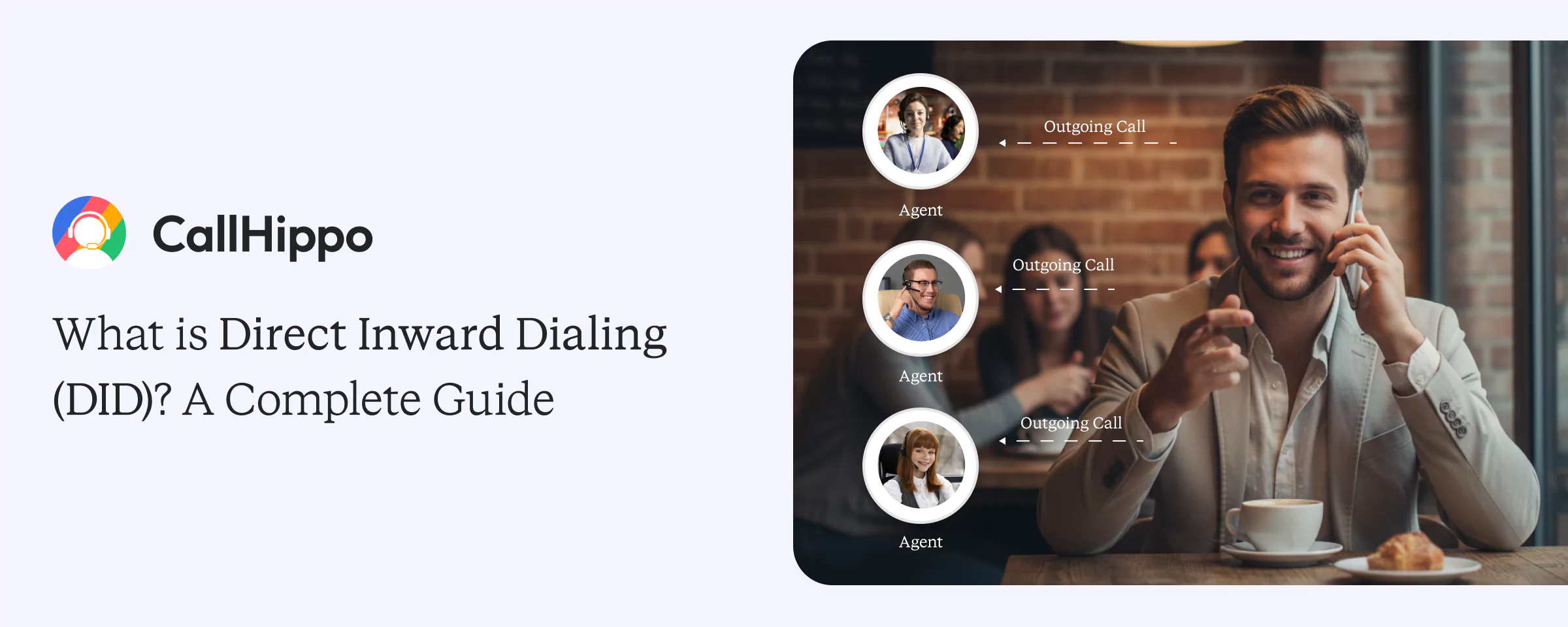Think about how frustrating it is when customers call your business and get transfer around between departments. Direct Inward Dialing (DID) fixes that problem. Your customers dial one number and reach exactly who they need, no transfers, no waiting, no hassle. 80% of consumers say that speed and convenience are the most important elements of a positive customer experience.
In this guide, we’ll explain the direct inward dialing meaning, how it works, what it does for your business, and why modern businesses rely on it to create a better customer experience.
What is Direct Inward Dialing?
Direct Inward Dialing (DID) is a dialing service where you can give direct dial phone numbers to your employees, teams, or departments without installing multiple physical lines. Your telephone service provider connects incoming calls straight to the right desk extension. This reduces wait times and speeds up communication for both your customers and your team.
How Direct Inward Dialing Works?
Here’s how direct inward dialing works. You assign unique direct dial numbers to different people or departments in your company. When someone calls these telephone numbers, your company’s phone system automatically forwards calls to the right desk extension. No receptionist needed. The system handles dedicated call routing so callers reach the right person quickly every time.
Types of DID Numbers
DID numbers come in different types. Each one serves different business needs and helps you communicate better with customers.
Local DID Numbers
Local phone numbers give you a presence in specific regions. Your customers see familiar area codes, which builds trust. These business phone numbers make it easier and cheaper for local clients to reach you. You can connect with people in your area while looking credible in those markets.
- A New York business gets a 310 LA number so Los Angeles customers feel they’re calling a local office.
Toll-Free DID Numbers
Toll-free numbers let customers call you without paying anything. This encourages more people to reach out. These numbers make you look professional and help you provide great customer service. If you handle lots of calls, toll-free numbers work really well. They make your business accessible across different regions without costing your customers a dime.
- An e-commerce brand uses a 1-800 number so customers across the U.S. can call free of charge.
International DID Numbers
International direct dial numbers help you look like a local business in other countries. Your customers abroad get local contact numbers to call. These virtual direct dial numbers make international communication simpler through the telephone network. You can expand worldwide without opening physical offices everywhere. It’s a practical way to connect with global clients.
- An Indian software company buys a +44 London number so UK clients can call them like a local business.
Benefits of Using Direct Inward Dialing
Direct Inward Dialing (DID) brings real benefits. It makes your operations more efficient, costs less, and improves how customers experience your business.
1. Professional Image with Unique DID Phone Numbers
- You can give unique direct dial phone numbers to each employee. This makes your company look professional and well-organized.
- Different departments get their own direct phone number access. No more confusion for customers.
- These direct dial features show people your business is organized and easy to reach.
- Each service having its own direct line strengthens how credible you look.
2. Simplified Call Routing
- Incoming calls go straight to the right extensions. Your customers don’t get transferred around through the main reception lines.
- Inbound callers connect with the right specialist right away. Questions get answered faster.
- Your private branch exchange reduces delays in handling calls. Internal workflows get better.
- Dedicated call routing creates a smoother experience for everyone who calls.
3. Cost Savings with VoIP Integration
- When you combine DID with a VoIP system, you cut communication costs significantly across multiple locations.
- An experienced VoIP provider handles your business communication without expensive infrastructure.
- You can manage higher call volumes while needing fewer trunk lines than old-school systems.
- Virtual numbers integrated into VoIP platforms make international calls affordable.
4. Scalability for Growing Teams
- Need to grow? Add new direct dial phone numbers instantly without buying more equipment.
- New employees get direct phone numbers right away. This supports mobile workforce demands.
- As your business grows, your organization’s phone system grows with it. Virtual direct dial numbers adapt quickly to what you need.
- Everything stays flexible as your business changes.
5. Improved Customer Experience
- People get direct access to whom they need. No delays, no frustration.
- Direct dial-ins work faster than making people navigate complex phone menus.
- Reliable direct dial lines help you build trust through personal interactions.
- Quick responses improve customer service and cut down waiting times. This builds loyalty.
Want to appear local in 50+ countries?
Try CallHippo’s International DID service to get local customers on board.
Direct Inward Dialing Use Cases
Let’s look at how businesses actually use direct inward dialing to communicate better, manage calls, expand globally, and track marketing campaigns.
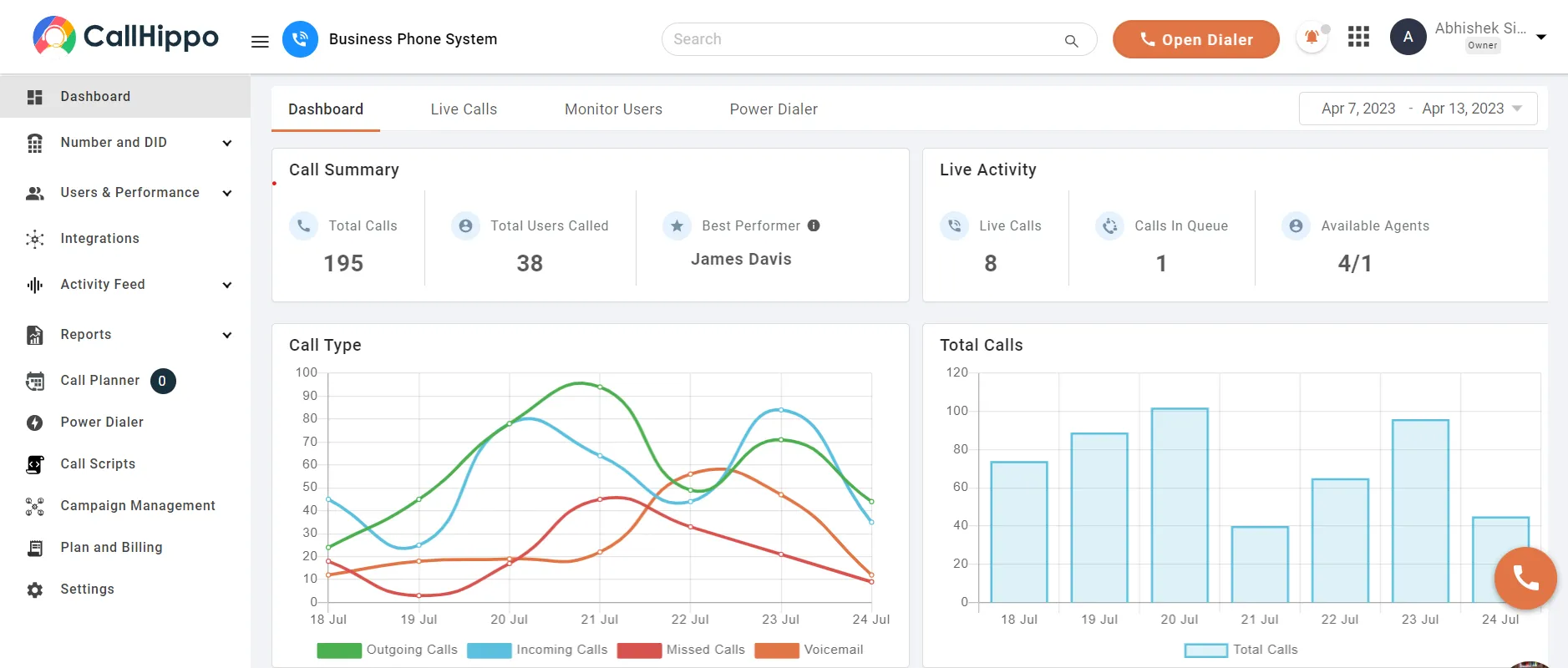
Dedicated DID Phone Numbers for Departments
You can give different departments their own dialing phone numbers. Maybe your sales team gets one set, and after-hours support gets another. Inbound calls reach the right team right away. This speeds things up and makes your business phone system work better. Customers get direct access without you needing multiple physical phone lines or complicated call forwarding setups.
Assigning DID Numbers to Remote Teams
Remote teams stay connected with customers and each other using direct dial numbers. Each person in your mobile workforce gets their own direct dial line. They can use multiple devices. This setup works great because location doesn’t matter anymore. Remote employees operate professionally while staying reliably connected with customers anywhere.
Using DID for International Business Presence
Expanding internationally? Use direct inward dialing service to look local in foreign markets. Customers dial local telephone numbers, and your telecom service routes calls globally through virtual links. You reduce costs, make yourself more accessible, and build trust without renting offices abroad.
Tracking Marketing Campaigns via Unique Numbers
Direct dial phone numbers help you track which marketing campaigns work. Give each channel or ad its own unique number. Your company’s private branch exchange logs the calling party information separately. Now you can see what’s working, figure out which campaigns succeed, and spend your budget smarter.
How to Get a Direct Inward Dialing Number?
Getting direct inward dialing numbers is pretty straightforward. Pick a telephone service provider, set things up, and manage costs based on what you need.
Choosing the Right DID Providers
Pick a reliable VoIP provider with good call quality, coverage where you need it, and prices that work for you. Look at features like call routing and CRM integration. Make sure they offer good support. A robust telecommunications system from providers like CallHippo keeps things simple and gives you what you need without complications.
Set up Process with VoIP or Cloud PBX
Direct dial numbers work with VoIP systems or cloud-based private branch exchange PBX platforms. After you buy numbers from your telephone company, you set them up to automatically forward calls to specific extensions or mobile phone devices. Cloud PBX platforms let you manage everything easily. You don’t need complicated equipment or desk phones sitting around your office.
Costs Involved (Per Number, Per Minute, Packages)
What you pay depends on your provider and plan. Some charge per telephone number. Others have packages with per-minute rates. If you’re a small business, calculate how many calls you expect and what features matter. Providers like CallHippo offer affordable packages that make direct inward dialing service practical without breaking your budget.
Key Features to Look for in DID Phone Numbers
When you’re choosing direct dial numbers, focus on features that keep things reliable, flexible, compliant, and compatible with your business phone system.
Call Forwarding & Routing Options
Your direct dial phone numbers should handle advanced call forwarding and routing calls options. Inbound calls need to reach the right person or department fast across locations and multiple devices. This speeds up responses and creates a better customer experience.
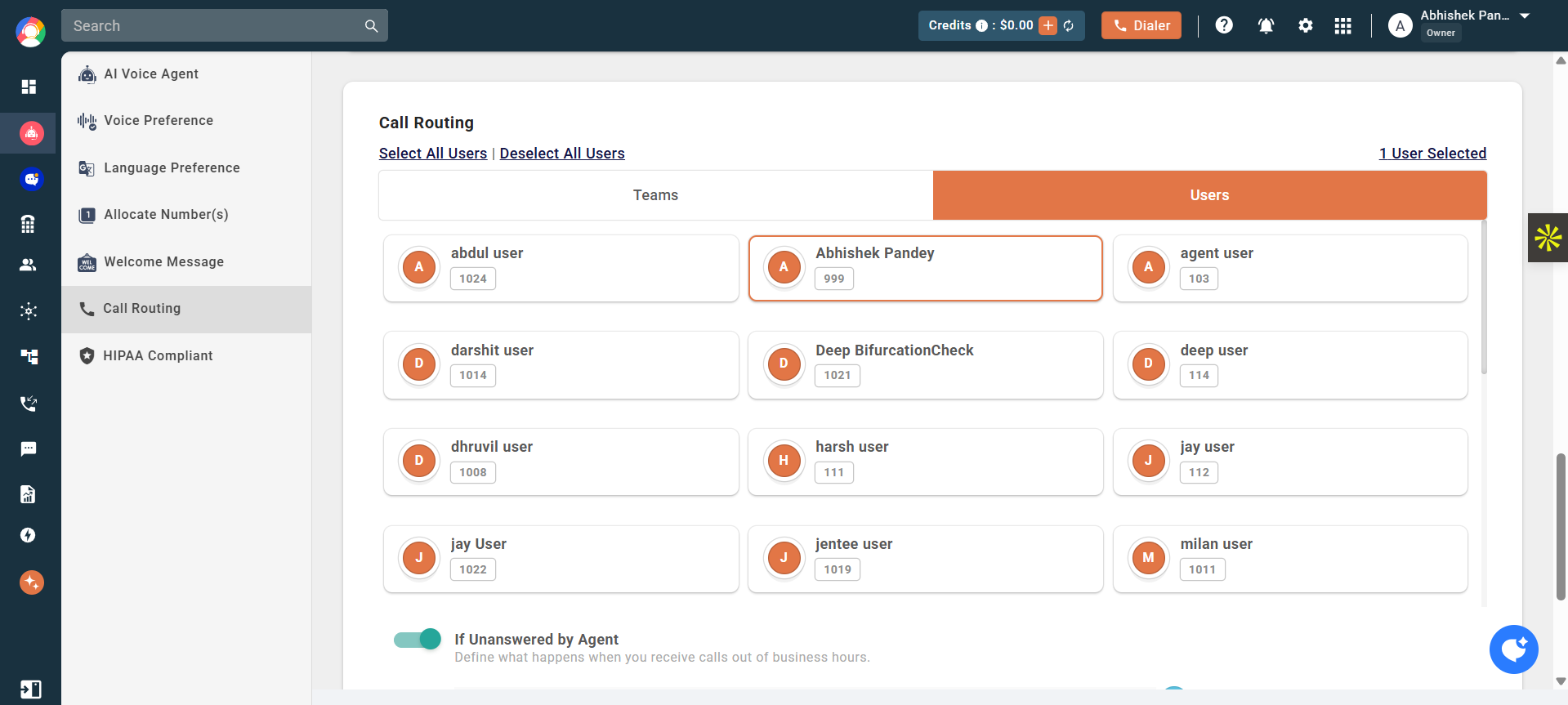
Integration with CRM & Business Tools
Find direct inward dialing solutions that work with your CRM systems and other tools. When everything connects, you get automatic logging and better lead management. Your team can manage calls efficiently, track interactions, and deliver consistent service across channels.
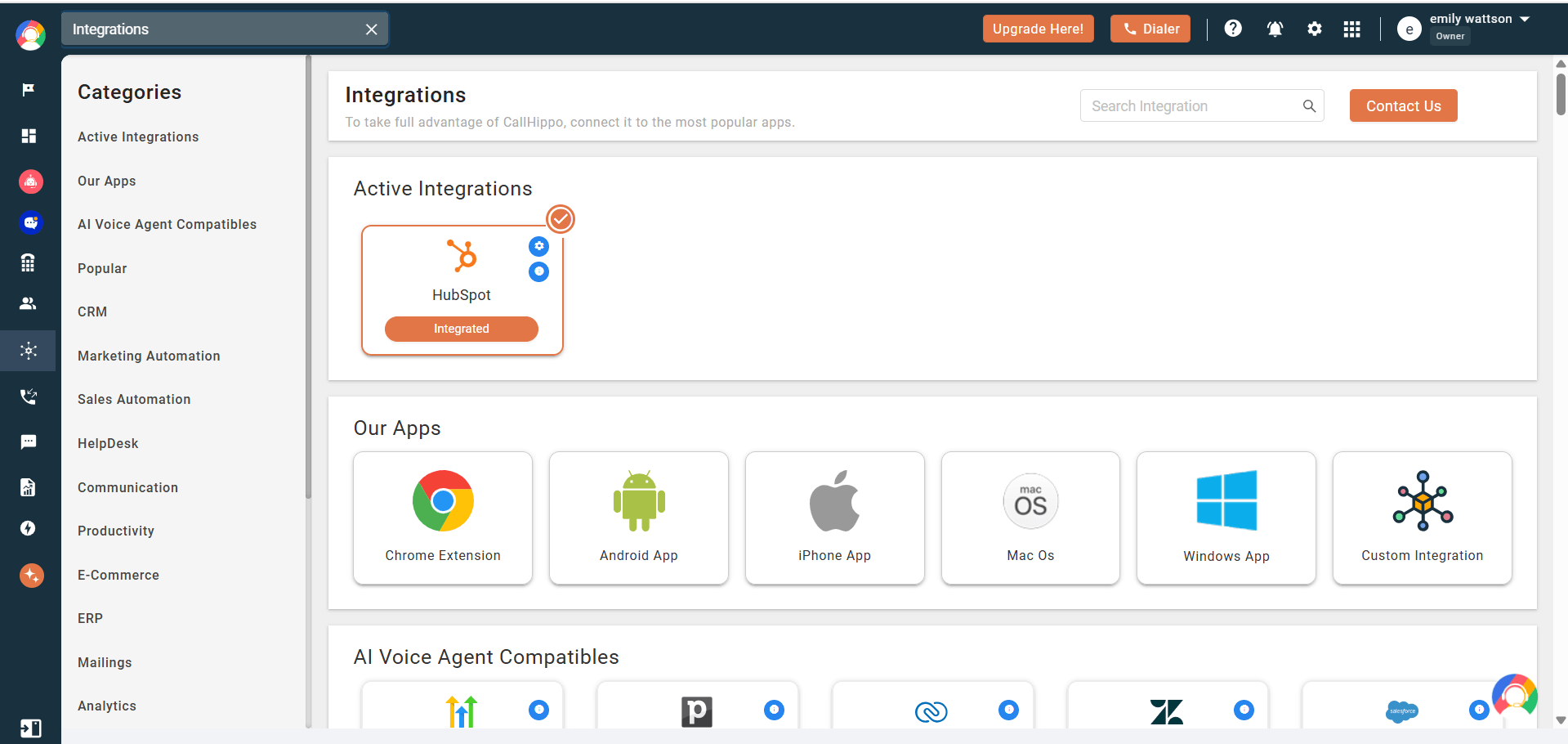
Number Portability
Make sure your VoIP provider offers number portability. You want to keep the same direct phone number if you switch services. This keeps things running smoothly, doesn’t confuse customers, and makes moving between telecom service providers easier.
Security & Compliance (HIPAA, GDPR, TCPA)
Security matters when using direct inward dialing service. Your provider should follow regulations like HIPAA, GDPR, and TCPA. A more robust telecommunications system protects customer data and keeps communication secure while meeting legal standards.
Direct Inward Dialing Metrics & KPIs to Track
Track these DID metrics to measure how well things work, control costs, and improve customer service using actual data.
Call Connection Rate
Call Connection Rates measures how many incoming calls get answered. Higher rates mean you’re handling calls well and customers are happy. Lower rates show you’ve got bottlenecks. Watch this to make sure your team is available to receive calls.
Want better connection rates? Improve how you’re routing calls, add more staff during busy times, or connect DID with your CRM tools. Platforms like CallHippo offer auto attendant features that track call performance and help you respond faster.
- Call Connection Rates % = Connection Call / Total Incoming Call x 100
- If 850 out of 1000 calls are answered, your connection rate is 85 % .
Average Cost per Call
This tells you what each call costs, DID charges, VoIP expenses, and staffing. Tracking this helps control spending and makes sure direct inward dialing gives you value. Lower costs mean better returns.
Cut costs by picking affordable plans from an experienced VoIP provider. Optimize call routing and use VoIP integration. Providers like CallHippo have flexible pricing that lowers costs while keeping quality high for modern businesses.
- Call Connection Rates % = Total Communu=ication Cost / Total Number Of Calls
- If monthly cost is $5000 and you handled 10000 calls, your average cost per call is $ 0.50.
Missed Calls per DID Number
Missed calls are lost chances. Track missed calls per direct dial number to spot weak points in customer communication. Too many missed calls mean you need better systems, more staff, or improved routing.
Fewer missed calls means happier customers and more trust. Use voicemail through a fax server, automated call distribution, and real-time notifications from platforms like CallHippo to fix this.
- Missed Calls Per DID Number = Total Missed Calls / Total DID Numbers
- If you missed 200 calls across 20 DID numbers, that is 10 calls per DID number.
Security Best Practices for DID Numbers
Protect your direct dial phone numbers with strong security. This prevents fraud, ensures compliance, and keeps business communication safe.
Preventing Call Spoofing
Call spoofing tricks customers and hurts trust. Use authentication and secure direct inward dialing service to reduce risks. Providers like CallHippo have anti-spoofing features that keep calls legitimate and safe through the telephone network.
Enabling Call Monitoring/Alerts
Monitoring helps you catch unusual activity on your organization’s phone system quickly. Set up thresholds and get alerts for suspicious patterns. CallHippo’s real-time monitoring gives you better oversight so you can prevent fraud and respond to threats fast.
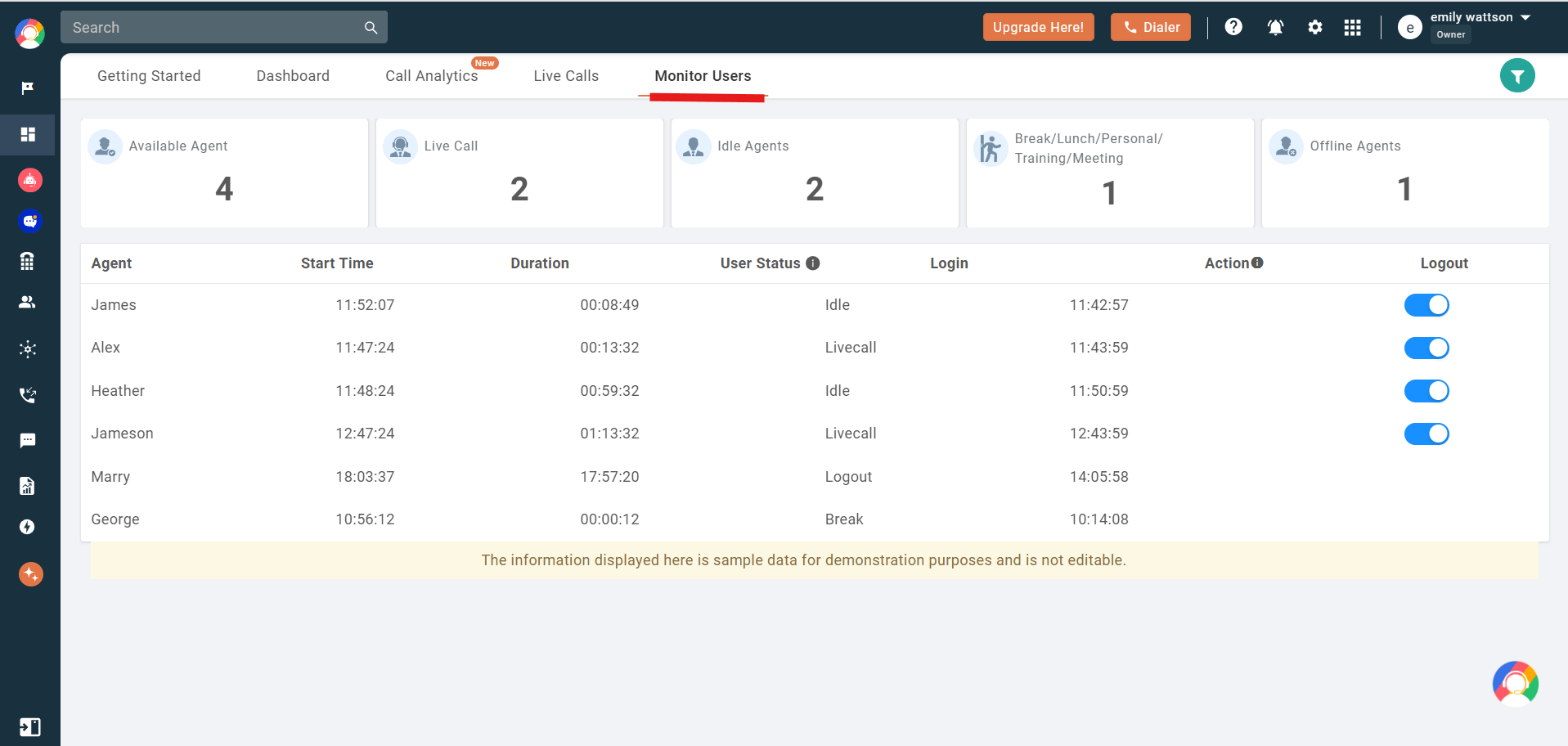
Using Encryption with VoIP Integrations
Encryption protects sensitive data going through the DID and VoIP system networks. Make sure your VoIP provider offers end-to-end encryption. This stops unauthorized access, protects customer information, and keeps communications secure while meeting standards like GDPR and HIPAA.
Direct Inward Dialing vs. Alternatives
Understanding how direct inward dialing compares to other options helps you pick the right solution for routing calls in a way that works and doesn’t cost too much.
| Comparison | Direct Inward Dialing (DID) | Alternative | Key Difference |
|---|---|---|---|
| DID vs. Direct Outward Dialing (DOD) | DID lets customers call specific internal extensions directly using unique numbers. | Direct outward dialing lets employees make outbound calls without going through a switchboard. | DID handles inbound calls. DOD handles outbound calls. |
| DID vs. Virtual Phone Numbers | DID gives unique numbers tied to internal extensions for direct routing. | Virtual numbers forward calls to existing numbers without linking to extensions. | DID gives individual user direct access. Virtual numbers just redirect. |
| DID vs. SIP Trunking | DID assigns direct numbers for incoming calls via VoIP or PBX systems. | SIP trunking sends voice, video, and data through internet connections using trunk lines. | DID manages inbound calls. SIP trunking handles broader communication. |
Common Challenges with DID Numbers & How to Solve Them
Using direct dial phone numbers comes with some challenges around scalability, portability, costs, and security. But you can handle them.
1. Handling High Call Volumes
Too many calls can overwhelm your team and systems. This causes delays and frustrates customers. Use advanced call routing, auto attendant features, and VoIP integrations to manage incoming calls smoothly during busy times.
- Use dedicated call routing to spread calls evenly across available agents.
- Set up IVR menus through your private branch exchange for better call handling.
- Add direct dial phone numbers during peak seasons when you need more capacity.
2. Maintaining Number Portability
You need to keep your direct dial numbers when switching providers. This keeps business running smoothly. Providers that support number portability make transitions through the public switched telephone network easier. Services like CallHippo let you migrate without losing credibility.
- Check that your telephone service provider supports portability before signing up.
- Keep your existing business phone numbers so long-term customers don’t get confused.
- Work with providers who offer fast, reliable porting with no downtime.
Combine DID with call recording & analytics. It helps train teams, improve customer service, and track KPIs like missed calls or average response times.
3. International Calling Costs
International communication gets expensive if your direct inward dialing service plans don’t cover it well. Pick providers with global packages, VoIP integration, or toll-free numbers. This keeps costs down while maintaining good communication.
- Find providers with affordable global calling packages.
- Use a VoIP system to avoid expensive international call charges.
- Consider toll-free numbers for better access across regions.
4. Security Risks (Spoofing, Spam Calls)
Direct dial phone numbers face risks like spoofing, spam, and fraud. You need security features like encryption, call monitoring, and anti-spoofing protocols. Trusted providers like CallHippo help protect customer interactions.
- Turn on call monitoring to spot suspicious activities fast.
- Use encryption and authentication to protect communication data.
- Partner with providers who have anti-spoofing and fraud prevention.
Conclusion
Direct Inward Dialing (DID) is a practical communication solution. It helps you handle inbound calls better, improve customer experience, and cut costs. When you give unique direct dial phone numbers to employees or departments, direct inward dialing service makes connections faster, communication more professional, and your business more accessible through the telephone network.
DID also helps you scale, integrate systems, and build a global presence as a modern business. With providers like CallHippo, you get a robust telecommunications system with good security and flexibility. Using direct dial numbers well means reliable communication, better customer engagement, and real returns that keep you competitive.
FAQs
1. What is the difference between a DID number and a virtual phone number?
A direct dial number connects straight to internal extensions through your company’s private branch exchange. A virtual phone number just forwards calls to existing lines. CallHippo offers both, so you can pick what fits your needs.
2. Can small businesses use direct inward dialing?
Yes. Direct dial phone numbers work great for small business operations. They make you more accessible to customers and look professional. CallHippo has affordable direct inward dialing service options that help small teams manage calls well without spending a lot on infrastructure.
3. How much does a DID phone number cost?
It depends on your provider, what features you need, and call volumes. CallHippo has flexible plans with reasonable prices. You get features like call routing and analytics without overspending.
4. Are DID numbers available internationally?
Yes. You can get direct dial phone numbers worldwide through the telephone network. This lets you look local with actual local contact numbers. CallHippo provides an international direct inward dialing service so you can expand to new regions and connect with customers abroad.
5. Can I keep my DID number if I switch providers?
Yes. Most providers let you keep your number through portability. With CallHippo, you can keep your direct dial numbers when switching telecom service providers. This avoids confusing customers and keeps communication consistent.
6. How secure are DID numbers?
Direct dial phone numbers are secure with good providers. CallHippo uses encryption, follows regulations like GDPR and HIPAA, and has fraud-prevention features. These protect customer data and keep business communication safe.

Subscribe to our newsletter & never miss our latest news and promotions.
